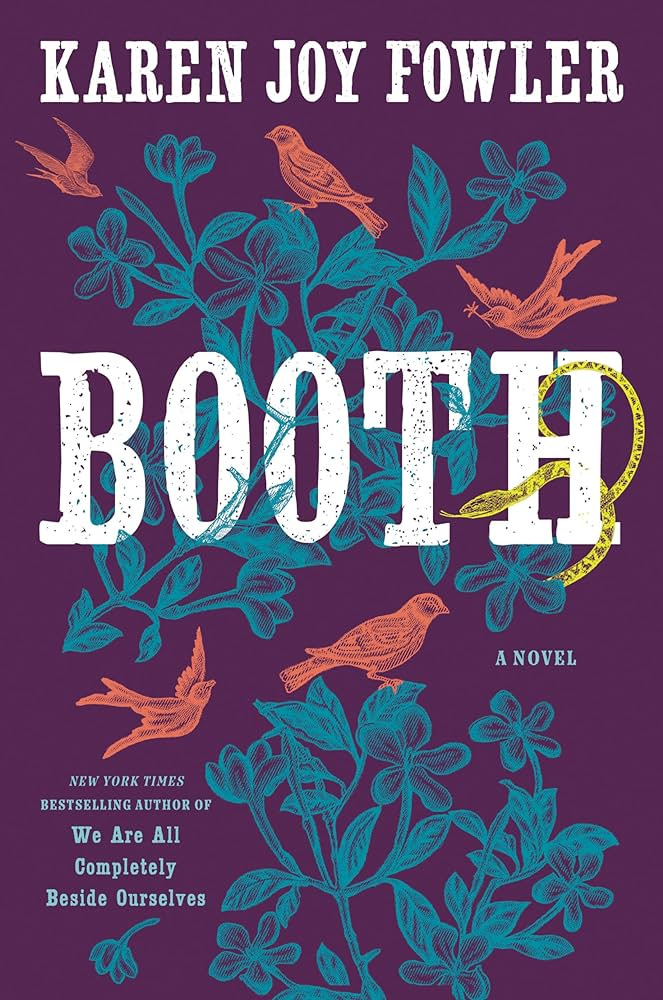June Newsletter
The Checkmark Returneth
I was needlessly, embarrassingly furious when Elon Musk took away my blue checkmark on Twitter last year. I learned to live without it, obviously, because I didn’t want to pay for something I once got for free. Still, I wasn’t happy. The ol’ ass was chapped, dear friends.
There was a time during my sports journalism era when I was employed by Gannett (the company that owns USA Today), and they went through all the trouble of getting me verified on the Bird App. I think it upset me so much because it was a fun remnant from my NBA days, so I was bitter when it went bye-bye.
Trigger warning: self-loathing incoming…
A few weeks ago, I paid for “X Premium,” and while I died a little inside to give the Cyber Truck Guy my credit card information, I think it’s worth noting that I made this investment to better connect with you all. Yes, I got the blue checkmark back (which is more a badge of shame than a badge of honor these days, TBH), but more importantly, I can now write longer writer advice posts that should show up more often in your feeds. I also get an edit button, so for $8 a month, I felt like it was worth sacrificing a bit of my pride.
Anyway, I say all of this because there is a way that you can help me feel less shame. First, when you see one of my posts on Twitter, I get a HUGE algorithm boost if you reply to the tweet. Even just, “This is great, thanks!” or “You’re the best, Joel!” is more than enough. This boosts my visibility and reach by exponents, much more than a like or even a retweet.
So when you see my post, please comment on that post. It will help me help you!
And ignore that little blue checkmark next to my name. It used to mean I was a journalist working for USA Today. Now it marks me as a pawn to capitalism.
Tips for Planning & Plotting a Series
I know we talk a lot about the benefits of pantsing versus plotting, and that’s a conversation that can extend from the scene level to the book level to the series level.
Let’s look at three examples of storytelling at the series level to see how different creators have gone about their business (with varying degrees of success, despite the overwhelming popularity of all three).
Plotting: I know how many people feel about She-Who-Must-Not-Be-Named in all her royal Terfdom, but there’s little doubt that the Harry Potter series is incredibly well crafted and paced over the course of seven books. We know she had a sense of where she was starting in Book One, where she would end in Book Seven, and how to bridge the gaps between. She sets things up in earlier books that pay off in later books, and it’s successful largely because she planned it that way. It rarely feels like the author is flying by the seat of her broomstick in this series, and the groundwork she laid was a huge part of building that trust with readers.
Pantsing: Let’s look at the television show Lost, which I was absolutely obsessed with shortly after the Turn of the Centry. It was appointment television for a lot of people every single week. Unfortunately, it became clear somewhere during Season 4 that the writers had no clue what they were doing from year to year. They’d just set up intriguing mysteries and then come up with sloppy solutions later in the writing room. By the end of the series, I was so jaded and disappointed that I don’t think it would’ve mattered what kind of finale they ran. I wouldn’t have liked it. (And for what it’s worth, I really didn’t like the Lost finale.)
With a book, writers obviously can take a different approach. If Lost was a novel, the show’s many seasons might’ve been a draft that could’ve been reworked and fine-tuned until it was properly circular, clean, and satisfying. But the writers had to make it up as they went along, and it shows.
Hybrid: Let’s talk about Game of Thrones (the A Song of Ice and Fire books, not the television show). George R.R. Martin allegedly knows where he’s taking the series (even though a new book hasn’t come out since 2011). He has—or at least at some point he had—an overall plan, and there are plenty of breadcrumbs in the early books that pay off in huge ways in later books. At the same time, Martin let the characters take him where they wanted to go, which has led to wide deltas of plotlines that are getting more complex later in the series instead of pinching closed. The result is that a series of books that once felt super tight and awesome are growing more watered down and broad and confusing as the series continues. My personal theory is that it’s this very thing keeping Martin from finishing the books; he let it get too big, lost his vision, and strayed too far from that initial gameplan (whatever it was/is).
So what do we take from all of this? Pantsing a book can work, but you can’t pants a series, at least not completely.
If you’ve never done the grunt work necessary to make a successful book series happen, fret not! I’ve got some tips to help you make it happen:
Identify your core concept or vision - I always suggest that authors start with the core concept, which could be an overarching conflict, theme, or question that will drive the entire series. You need a guiding light for everything you’re about to write, so even if you’re not sure what the story looks like yet, one of the most important things you can do early on is to have a general sense of what you’d like to accomplish.
Make a broad outline for the entire series - Whether you’ve got a duology or a ten-book series swirling around your head, it’s good practice to develop basic and general outlines for each book. What I mean is that every manuscript will have a central conflict that builds toward that final book’s biggest, baddest, scariest conflict. Knowing what each book will tackle (or even how many books long the series needs to be) will ensure good pacing throughout the series. You don’t need EVERY plot beat—in fact, I’d discourage against that—but a character’s main desire, a big bad, stakes, and an ending place are enough to get you started.
Think about big-picture and little-picture character growth - Character arcs are important in any book, but it’s a little trickier with a series because the growth needs to be more gradual. When outlining, consider what steps forward you want your character(s) to make in each book so they can end up as the best versions of themselves by the end of the series.
Weave interconnecting subplot threads - Foreshadowing, subplots, and minor characters all need attention in your series, too. Find good places to plant little seeds that may seem innocuous in Book 2 but will grow into something integral by Book 4 or 5. This is the sort of thing that makes a reader feel like they’re in good hands; we love feeling like authors had a big plan for something minor all along!
Don’t OVER plan; leave room for flexibility and change - You have to keep in mind that things are going to change. You’re loosely plotting out several books that should take you years to write. You will grow and change as a writer during that time, but more importantly, your characters and plot will grow and change in unexpected ways, too. Leave flexibility in your outline to accommodate the sorts of changes in direction that improve a book and a series.
Try not to rush the world-building - If you’re writing a trilogy, you’ve got three books to build out your world. Don’t feel like you have to do it all in Book One. It’s okay to leave some things a little confusing or ambiguous, especially when it comes to world-building!
(Side tip: I suggest creating a world-building Bible you can reference as you’re writing. You don’t think you’ll forget stuff, but you will. Even George R.R. Martin works with super-fans sometimes to make sure his books are consistent!)
Balance cliffhangers and resolutions - Every book needs to end in a place where there’s some satisfying solution to that book’s conflict. I see a lot of series where the author ends Book One because they were getting to the high-end of acceptable word counts, but there’s no real conflict resolution. That means Book Two doesn’t start its own new story in the context of the overarching series story, but rather is just the next chapter of Book One in an arbitrary Book Two. You’ve got two jobs when ending a book in a series: first, it should feel satisfying as a story all on its own, with a resolution of that book’s conflict, and second, it should push us into the next book of the series with a cliffhanger that keeps us energized.
Escalate - The conflict of Book One is going to feel huge at the time, but by the time the reader gets to the end of the series, Book One will feel like kid stuff compared to the conflict in the final novel. Start with lower-level conflicts (that are still big enough to drive a whole book!), and then escalate the danger and raise the stakes as the series goes on. Things should get bigger and scarier and more intense the later in the series we get!
One last REALLY IMPORTANT thought about writing a series (because I see this pop up with my writers all the time): Writing Book Two before you sell Book One is a risk. If no publisher wants that first book, are you better served spending your precious writing time on the next book in a series with no home, or trying something new/different that might have a better chance at publication?
Personally, I want to invest my time in things that provide a return on that investment, but at the same time, if these books will not release their talon grip on your precious author heart, it’s okay to write them even if they aren’t garnering agent interest. We write what we write! Just know that investing years of your life on a whole series when the first book hasn’t sold is a risk unless your plan is to self-publish. In that case, you can do whatever the heck you want!
Writing a series can be a really fun endeavor that keeps you busy for a huge chunk of your adulthood. You’re going to fall in love with these characters and this world, and you will ache for the day that readers will feel the same way. Hopefully, these tips boost your chances of making that happen someday!
Brigham Editorial Softball is Back!
For the second year in a row, I decided it would be fun to sponsor the softball team I coach. We’re off to a 3-0 start with a few sweet wins, and my daughter has been on the mound dealing strikeouts left and right. Look at these gorgeous light-blue jerseys:
My wife and I also took our girls to Oklahoma City this past weekend to watch the Women’s College World Series. I know not everyone who reads this newsletter is a sports fan, but if you’ve got kids, you understand how cool it is to watch your babies exist in a place where they are excited and starstruck and fully in their element. We had a fun weekend. Softball season is probably my favorite time of the whole year!
Taking Some Time Off
Later this month, I’m going to be taking some time away from editing to hang out with family, travel a little, and recharge my batteries. I make myself very accessible to my writer clients in large part because I love stories and I love all the storytellers I’m blessed enough to work with. However, I’m not planning on responding to many emails while I’m out and about. Feel free to leave a message if you need something from me, but don’t be offended if it takes me seven to ten business days to respond!
My family is headed to Canada for the first time for our vacation this year, specifically Niagara Falls and Toronto. I spend the entire year looking forward to being anywhere other than Illinois, and the time has finally come for me to spread my wings and fly (or in this case, drive). Can’t wait to explore some new cities!
Coincidentally, my birthday and Father’s Day are the same day this year (I hate when that happens), so I need some time to properly celebrate myself, too!
What I’m Reading
Booth, by Karen Joy Fowler
I wasn’t sure what to expect from this book but HOLY COW was it smart and interesting and well done. It wasn’t the most traditionally “entertaining” book, but as it follows the family of John Wilkes Booth in the years leading up to Abraham Lincoln’s assassination, I found myself obsessed with this eccentric family and the tragedy I knew was coming.
Fowler doesn’t center the assassin but instead builds the narrative around his siblings. So much of what she’s written was pulled from research, but she sprinkles in more than enough artistic liberty to fill in the gaps and keep the book engaging. I’m an Illinois guy, where people love Lincoln about as much as Louisianans loves Mardi Gras, so maybe this was my Midwestern bias showing through. But I really liked this book and its subtle social commentary on the parallels between the political goings-on of the mid-1800s and modern America.
Other than that, I’ve been reading nonfiction books and client manuscripts, while my audiobook time has been more devoted to dynasty fantasy football podcasts lately. You’d think with summer here I’d be reading a lot more, but it hasn’t been that way! I’ve got some long drives coming up, so I’ll hit the audiobooks harder once I’m behind the wheel. As for books in print? I keep falling asleep on the couch at night before I get a chance to read for pleasure. I’m old, friends, and getting older!
Have a great June, team. Adore you all :)
Thanks for reading! If you’re new here, don’t forget to subscribe, and please share with any other writer buddies you think may benefit.
Hugs and high fives,
-JB









